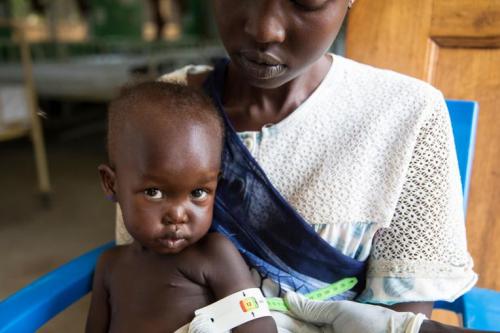Global Report on Food Crises reveals scope of food crises as COVID-19 poses new risks to vulnerable countries
Annual report on acute food insecurity and malnutrition published
An international alliance of UN, governmental, and non-governmental agencies working to address the root causes of extreme hunger have released a new edition of their annual Global Report on Food Crises on April 21, 2020.

Afra, held by her mother Therese, is being checked for malnourishment at Al Sabbah Children's hospital in Juba, South Sudan.
Key findings of the Global Report
The report by the Global Network Against Food Crises indicates that at the close of 2019, 135 million people across 55 countries and territories experienced acute food insecurity* (IPC/CH Phase 3 or above).
Additionally, in the 55 food-crisis countries covered by the report, 75 million children were stunted and 17 million suffered from wasting in 2019.
This is the highest level of acute food insecurity* and malnutrition documented by the Network since the first edition of the report in 2017.
Additionally, in 2019, 183 million people were classified in Stressed (IPC/CH Phase 2) condition -- at the cusp of acute hunger and at risk of slipping into Crisis or worse (IPC/CH Phase 3 or above) if faced with a shock or stressor, such as the COVID-19 pandemic.
More than half (73 million) of the 135 million people covered by the report live in Africa; 43 million live in the Middle East and Asia; 18.5 million live in Latin America and the Caribbean.
The key drivers behind the trends analysed in the report were: conflict, (the key factor that pushed 77 million people into acute food insecurity), weather extremes (34 million people) and economic turbulence (24 million).
Source:UNICEF
- 297 reads
Human Rights
Ringing FOWPAL’s Peace Bell for the World:Nobel Peace Prize Laureates’ Visions and Actions

Protecting the World’s Cultural Diversity for a Sustainable Future

The Peace Bell Resonates at the 27th Eurasian Economic Summit

Declaration of World Day of the Power of Hope Endorsed by People in 158 Nations

Puppet Show I International Friendship Day 2020

